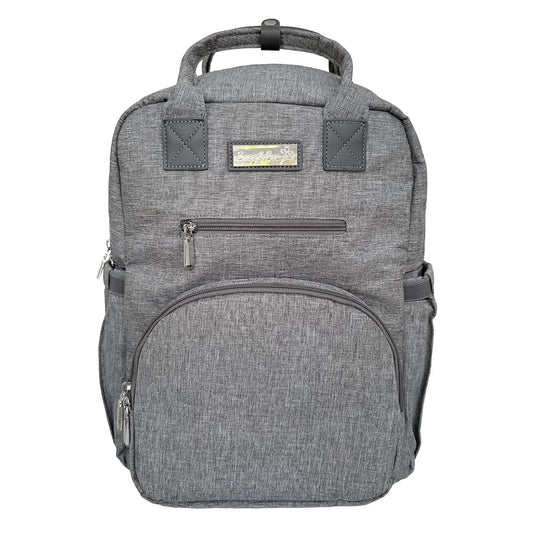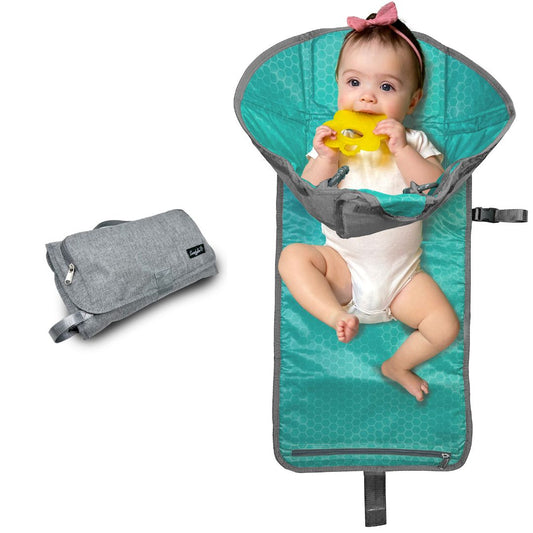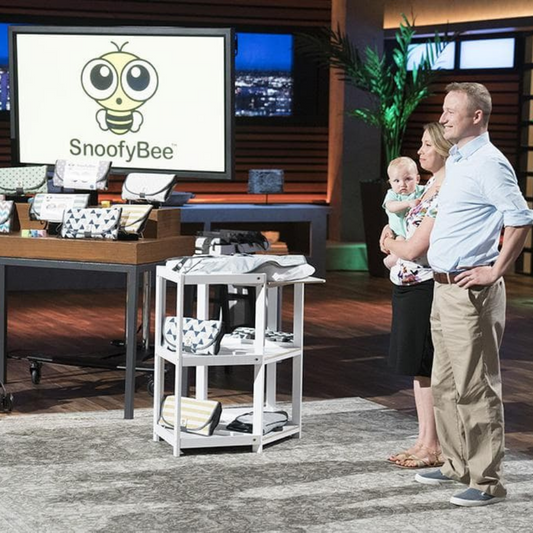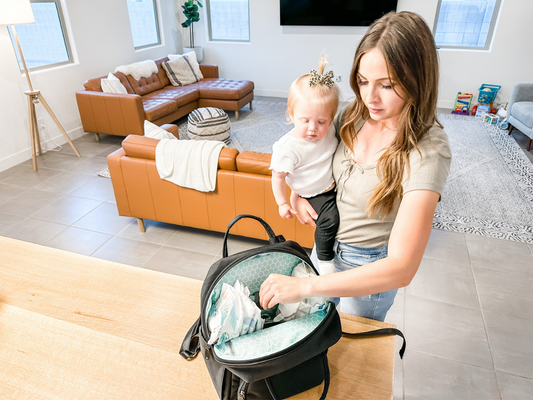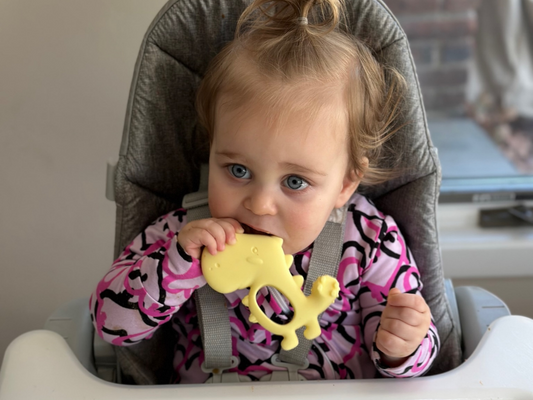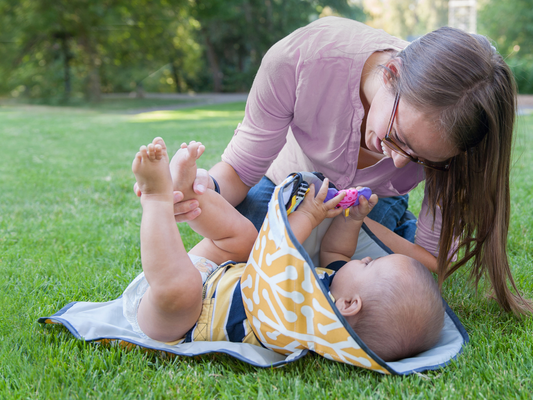Am I a helicopter dad?🚁 I know, I know, it’s important for us all to let our kids explore without our constant shadow. Minor bumps and scrapes are important aspects of their development. They need to be allowed to learn to assess some risks, problem solve, and navigate new terrain even as toddlers, but I do think that there are some activities that really are inherently dangerous and do require a very close watch at all times. This is especially true of anything around water.
Whether it is the ocean waves, or the shore of a river or lake, few things seem to draw the attention of my kids more than moving water. They want to see it, they want to throw things in it, and they want to get in it. Today, I want to share with you what I have learned over the years to keep them safe at the beach, whether you are at the ocean or at the lake.
Six Tips to Keep Toddlers Safe at the Beach and Around Water
1. Each Child Needs To Be Assigned To One Adult With Clear Double Communication.
We have found that it is okay for one adult to have more than one child at a time to look after, but it is not as safe to have more than one adult looking after the same child. It seems counterintuitive but hear me out. Two adults looking out for one child can easily become comfortable knowing that they aren't the only one on duty and more often than you might think, both can get side tracked mistakenly believing that the other person will have an eye out for the child. This can result in a situation where the child isn't being supervised at all.
To prevent any confusion, we have learned to ALWAYS make sure that every adult knows exactly which children they are responsible for, and that any trade-offs are communicated with double confirmation by each person.
For example, if my wife tells me which children she wants to look after and which ones she wants me to have, I then repeat back to her which ones I am watching and which ones I expect that she will be watching. Once she confirms that this is what she means, we then divide with the kids we decided on. When we make any changes, we have learned to again confirm this both ways before switching gears.
2. Consider a Life Jacket
Whenever water is around, a life jacket does make sense. This is especially true if you intend on introducing your child to the waves. If you have spent much time around the ocean, you know how unpredictable the water can be. When conditions are just right, waves will occasionally stack up on each other and become more powerful than all other waves before and after them. A life jacket could make all the difference in the instance where a sneaker wave catches you by surprise.
The life jackets on the market today come in all sorts of fun designs and styles. My favorite thing about them is that most child life jackets now have a quick-grab handle on the top. It lets me hold my child securely without them even realizing they are being held, so they get to enjoy the safety of having me there while also feeling like they are exploring freely. Make sure to get the right size and ensure that it is fitted properly before relying on it. If possible, test out the life jacket in calm water to see how it supports your child as they float, and to make sure the fit keeps their head comfortably out of the water. I know it should go without saying, but I will say it anyway, a life jacket is no substitute for careful supervision around water.
3. Hats and Sunblock For Toddlers
We live in Oregon, where we get to enjoy the presence of big trees almost everywhere. We are so accustomed to the shade of trees that if we aren’t carefully thinking ahead, the amount of sun we encounter on trips to the lake or the ocean beach can catch us off guard. Be sure to use plenty of sunblock, and if possible, a hat, to help shade their delicate skin and eyes from the sun. Even on overcast days sunburns can be a big problem if you don’t take precautions.
There are many different types of sunblock to choose from. Although we do enjoy the convenience of sunblock sprays for ourselves, we have found that lotion is better to use with babies and toddlers because it is easier to avoid getting into their eyes or mouth than a spray is. Pay close attention to how your child reacts to new lotions and sunblocks. One of our children in particular was prone to allergic reactions to some ingredients, and we had to make sure to only use sunblocks that were proven to work well for them. While only about 1% of children experience sunscreen allergies, the most likely ingredient triggers found in sunscreen to look out for if your child does react to it are oxybenzone or benzophenone-3. Sometimes added fragrances can be triggers as well.
Side note: Are kid leashes a good idea? 🤔
With all this talk of how important careful supervision around waves is, you might be wondering: Are child leashes safe? Is a child leash a good way to keep my child close by? I understand the sentiment. After all, leashes work great for my unpredictable dog, why not use them for a toddler with the same tendency to bolt away without a moment's notice? There are actually good reasons that you don’t see child leashes very often. Benjamin Hoffman, M.D., chair of the injury prevention council at the American Academy of Pediatrics advises against them because: “[F]rom an injury standpoint, I would worry about entanglement or choking — we know the risks of other loose 'cords,' like on window blinds." See the full article at good house keeping.
So what is a good alternative for a kid that likes to squirm free from your hand and bolt? Our 4th and 5th tips have you covered:
4. The Wrist-Lock Grip
As the dad of more than one unusually spirited child, I have developed a hand grip that safely keeps their hand in mine while minimizing the amount of squeeze pressure I have to apply. Instead of just holding their hand in mine, I grip their hand with my thumb and three of my fingers while I wrap my pinky finger snugly around their wrist, as pictured here. It works great for walking with toddlers and young kids.

This grip is very difficult for them to slip away from even with just light pressure. They get to stay comfortable and I get to maintain their safety. It is the best of both worlds. I highly recommend trying it out if you haven’t yet made this helpful discovery while trying to hold onto a sweaty little hand 🥰.
5. “Touch Your Nose If You Can Hear Me.”
As your kids learn more and more how the beach works and what to be aware of, you will get more comfortable letting them have a bit more freedom. When you do, though, it is still vital that you can catch their attention quickly. (Preferably without sounding like a howling banshee.)
In our family, we have found that the quickest way to get our children’s attention is to give them a simple command that they have practiced many times. The particular command we give is “touch your nose if you can hear me.” Once they touch their nose, it is almost like magic how willing they are to comply with the next direction we give. I am still not sure why this one works so well, but it does. We practice the “touch your nose if you can hear me” command over and over again as soon as they are old enough to follow simple directions. We practice it so much that it becomes instinct for them. Because it becomes so instinctual, we know that if they don’t respond it probably is because they really can’t hear us and we need to speak louder.
In practice it looks something like this:
We say, “Touch your nose if you can hear me!”
They will then stop what they are doing and touch their nose.
We then say, “Good job! Now, please bring me your shoes.”
Nine times out of ten, they magically comply.😊
In hindsight, during the era of Covid maybe “touch your nose” isn’t the best thing to ask them to do, but you can decide on any simple command, followed by “if you can hear me,” and it should work the same. The key thing is to practice it over and over in many different settings until it becomes a reflex for them when you ask them to do it.

6. Have Important Things Ready For Easy Access
Thinking ahead to what items you will need to have on hand and easily accessed will allow you to focus on enjoying a safe time together on the beach. Some of the top items we find necessary to have ready are: extra sunblock, drinks, snacks, diapers, wipes, a towel, and a change of clothes. Snacks and meals on the beach need containers that can fully close to keep out the sand, and a clean portable changing station is key to keeping sand out of the diaper during changes. Our playtime changing pads and suction-go-bowls work great to keep things accessible and clean.
Also, although it won’t be available yet for this summer’s trips, Amy recently designed the amazing One-Handed Diaper Bag. It just successfully funded on Kickstarter and entered into production, which means that later this year, EVERY item you bring with you in your diaper bag will be easy to instantly grab one-handed.✋ We can’t wait for more people to try them out!
Enjoy your time at the beach!
Yesterday, as my 5-year-old watched his 3-year-old brother run off to a playground, he turned to me and softly said, “They grow up so fast” 😂💕 As hilarious as it is coming from him, he definitely isn’t wrong. The toddler years fly by, and summer is even shorter. We hope you have a great time adventuring out on the beach safely with your little one.
Wishing you all the best,
-Mike Perry, Dad of 6 kids, and co-owner of SnoofyBee LLC.




